ULV1200 Profesyonel
Thermal Fogging and Cold Fogging Machine
DocumentsEquipped with an 18 HP Vanguard Briggs & Stratton engine (USA) and a roots-type blower,
Comes with 50-liter ULV cold fogging chemical tank, 50-liter thermal fogging chemical tank.
Capabilities:
✔ 15 µm Cold Fogging
✔ 30 µm ULV
✔ 55 µm Mist Blower
✔ 15 µm Outdoor Thermal Fogging
✔ 30 µm ULV sewer spraying apparatus
✔ 15 µm Thermal sewer spraying apparatus
(Can be used efficiently in 6 different application areas.)
Description
Description
The vehicle-mounted ULV1200 Professional model is a versatile and combined spraying machine that provides effective control in 6 different application areas. It has the capability to perform both thermal fogging (oil-based, white smoke spraying) and cold fogging (water-based, transparent spraying).
The Thermal fogging spraying method is a vector control technique that was widely used in the past and is well known by the public. Therefore, when citizens see a spraying vehicle emitting smoke on the street, they tend to perceive the effectiveness of the application more, both visually and psychologically, and even share these moments on social media platforms, praising the provided public service. Because fogging spraying creates a perception of “visible control” among the public, it reinforces the sense of trust and raises social awareness. Public service institutions demonstrate their successful services visually and most practically to citizens with this visible vector control method.
Thermal fogging (thermal fogging) provides 12 times more effective and efficient control compared to water-based spraying technics because it uses oil-based spraying. Since the sprayed particles are oil-based, they surround the chemical with an oil layer and eliminate the risk of evaporation of the droplets under high sunlight exposure. Thanks to the evaporation delaying property of the oil, the droplets become more resistant to high temperatures and can travel longer distances without evaporating, contacting and eliminating harmful pests.
Oil-based spraying have smaller micron sizes, and remain suspended in the air for longer periods once combined with the resistance to vaporation. In this method, diesel fuel is generally used as the carrier oil. The insecticide is mixed with diesel and vaporized by exposure to high temperature; the resulting fine smoke. Unlike ULV method, thermal foggers shread the chemical into tiny droplets in form of fog with the help of heat ; rather than air power as in ULV. Thus, much smaller droplets can be created, these droplets have a higher chance of contacting with flying pests, increasing the success rate of pest control. Additionally, the temperature used during application does not degrade the active ingredient of the chemical. On the contrary, scientific studies show that it increases the chemical’s efficacy approximately 12 times. This makes the thermal fogging method especially effective for controlling flying pests in open areas and sewers. The ULV1200 Professional model is the most effective and successful machine for adult flying pest control and should definitely be preferred in areas with dense mosquito and fly populations.
ULV1200 Professional model;
✅ Spraying residual chemicals on garbage containers with ULV sewer apparatus
✅ Thermal fogging treatment of garbage conteiners, sewers with thermal sewer apparatus
✅ Open area spraying with the smoke method which is 12 times more effective to quickly eliminate high-density flying pest populations,
✅ Spraying 15 µm (cold fogging) and 30 µm ULV water-based chemicals with the nozzle to control flying winged pests like mosquitoes and flies in open areas,
✅ Spraying 55 µm particles in parks and gardens (increasing consumption rate) to accelerate the falling time of the droplets on the ground for larger sized pests, tick control on grass.
✅ It is a multifunctional combined spraying machine capable of performing 6 different pest control methods.
It is a spraying machine aimed at controlling adult flying pests (imago) with contact-effective chemicals. Since these devices spray by fogging, they consume very little chemical. This device has a 50-liter capacity ULV chemical tank and a 50-liter capacity thermal chemical tank. If desired, the operator can apply a compound tank system to increase the capacity to 100 liters for the preferred spraying method. In other words, thermal fogging can be disabled to perform 100 liters capacity ULV spraying, or 100 liters capacity thermal fogging can be performed. The World Health Organization (WHO) recommends spraying for mosquito and fly imago control at an average consumption rate of 500 ml/min. If the spraying area is very large, the device can spray continuously for 12 hours with refilling.
This device is designed to operate without failure. Even if the battery runs out or the remote control breaks, it can continue spraying activities. If a break free spraying machine which can continuously perform biocidal control activities is the aim, then choosing the ULV1200 Professional is a great choice. Unnecessary components such as electronic boards or fingerprint sensors that are not needed in a spraying machine increase the chance of malfunction. For these reasons, the ULV1200 Professional model is designed simply and purposefully with the highest quality equipment to enable continuous spraying activities.
The ULV1200 Professional model can operate according to spraying criteria of thermal fogging (0–15 µm), cold fogging (0–30 µm), ULV (30–50 µm), and Mist (50–100 µm). Additionally, with ULV sewer apparatus and thermal fogging sewer apparatus, it can perform contact-effective and residual spraying at the same time. It is generally preferred for controlling flying winged pests such as mosquitoes, flies, and midges. Spraying must be done with droplets of size appropriate to the pest’s volume. For mosquito imago control, WHO’s criterion is a maximum droplet size of 20 µm.
Advantages:
✔ ULV1200 Professional model is designed to operate without failure. Even if the remote control breaks or the battery runs out, thanks to the stainless steel tanks, it can continue spraying activities uninterrupted. Statistically, ULV1200 Professional models do not fail for 2 years. After 2 years, replacing and maintaining hoses and filters that wear out allows an average service life of at least 10 years. Designed to avoid failure, it is advantageous in terms of depreciation costs.
✔ It has one main regulator that adjusts the consumption flow rate and micron size of all four nozzles. It also has four independent sub-regulators behind each nozzle. While the micron size of all nozzles can be adjusted at once from the main regulator, it is also possible to spray with different micron sizes for the four nozzles using the sub-regulators. The two nozzles on the right can be set to 30 µm for fly control, and the two nozzles on the left can be set to 20 µm for mosquito control. Simultaneously controlling pests of different sizes saves chemical and time for the user.
✔ It has a direct coupling connection system with a rubber coupling reinforced with fiber fabric. It lasts longer compared to belt-driven systems. With this system high heat and power loss due to belt friction are prevented, plus providing fuel savings.
✔ A spare parts box is shipped with every machine. Coupling rubber, engine spark plug; oil, air and fuel filters, blower air filter, chemical filter, solenoid valve, spare hoses, and quick-connect equipment. (Spare parts boxes are only valid for international sales. For domestic sales, contact our after-sales service department.)
✔ The nozzle can be manually rotated to the desired position. It has 360° left-right and 360° up-down rotation angles. All nozzles can be rotated simultaneously from the bottom, and each of the four nozzles can also rotate independently 360° left and right. This allows spraying with a wider coverage width, facilitating better contact of contact-effective chemicals with harmful pests and increasing spraying efficiency.
✔ Equipped with an 18 Hp (USA-origin Vanguard) gasoline engine. It is the highest quality and least failure-prone engine used in the industry, also having the largest service network worldwide. Providing spare parts and service is easier compared to other engine brands. Vanguard engines come with a 3-year international warranty. If the user fills out the personal information form via the QR code on the engine, they gain an additional 1-year warranty, extending the total warranty to 4 years.
✔ Equipped with a roots type blower air pump, featuring a two-lobe positive displacement technique. These pumps are the longest-lasting and highest performing pumps used in vehicle-mounted ULV devices, capable of spraying the smallest micron sizes. Centrifugal pumps have blade breakage issues, and motors made with vacuum cleaner motors running on generators burn out and deform quickly. Users aiming for the lowest failure probability and highest performance in vehicle-mounted ULV devices should definitely prefer spraying machines with roots type blower equipment.
✔ The machine is guaranteed against manufacturing defects for 2 years and additionally has a 10-year spare parts availability.
✔ Chassis dimensions are suitable for all double-cabin vehicles.
✔ Licensed by the Republic of Turkey Ministry of Agriculture and Forestry.
✔ Optional 2-nozzle option is available. Sewer attachments are standard features on this model.
Frequently Asked Questions ;
What should be considered when purchasing a spraying machine?
When purchasing a spraying machine, the primary criterion is the uninterrupted continuation of periodic spraying activities. For example, mosquito control is generally carried out in 8-day cycles, and during this period, daily spraying must be done regularly considering the larval stage. Since the exact timing of larval deposition from previous mosquitoes cannot be known, the entire population is controlled by daily spraying for the first 8 days. Then, control is maintained with repeated periodic spraying every 8 days. This approach ensures significant savings in biocidal chemical consumption, effectively controlling the entire population.
However, if the spraying machine frequently breaks down, this routine is disrupted, and spraying activities must be restarted daily from scratch. This causes significant losses in both time and chemical costs.
Therefore, when choosing a spraying machine, instead of focusing solely on price-performance ratio; robust, durable, low-risk of break, simple, and purpose-appropriate machines should be preferred. Additionally, purchasing from manufacturers with a proven track record of easily and promptly supplying spare parts and providing after-sales support will be far more efficient in the long run.
In biocidal control, spraying machines are typically purchased once and used for about 10 years. However, biocidal chemicals must be regularly supplied every season for many years. Therefore, the correct equipment choice directly impacts chemical costs in the long term. To save on chemical use and conduct effective control, machines that can spray chemicals at the micron size most suitable for the target pest, have minimal risk of breakdown, and are made with quality components should be preferred. Such machines provide significant savings in labor, time, and chemical consumption, yielding successful biocidal control results in the long term.
What should be the droplet size according to the target pest?
For the control of small flying insects like mosquitoes, the World Health Organization (WHO) has set a standard that the diameter of particles sprayed using the cold fogging method should be at most 20 microns (µm). The main purpose of this approach is to prolong the suspension time of sprayed droplets in the air, to increase their drift distance, and enhance the likelihood of effective biocidal particles reaching the target pests through contact.
For controlling black flies and other medium-sized insects, the WHO recommends using droplets of 30 microns (µm) in diameter via the ultra-low volume (ULV) spraying method. This method ensures the appropriate dosage of insecticide reaching the target flies effectively and eliminating medium size insects.
In the case of large pests such as locusts, ticks, and stink bugs, sprayed particle diameters should range between 50-100 microns (µm) using the Mist Blower method. This allows the application of biocidal chemicals in sufficient doses by matching the droplet size to the pest’s physical size, producing effective results. There are two main reasons for preferring droplet sizes of 50-100 microns (µm) in Mist Blower applications:
- ✔ Larger droplets are needed to effectively neutralize larger sized insects,
- ✔ In contact or systemic based spraying activity, to prevent the excessive drift of droplets in the wind. With Mist Blower method, insecticide can travel up to approximately 30 meters and settles within 90 seconds; reaching the ground as large droplets. Thus, even if a month passes after application, insects consuming insecticide residues on the ground are eliminated through residual effects.
This method is ideal for source control of large pests such as larvae, ticks, and cockroaches found in parks, gardens, garbage areas, water channels, and residential surroundings.
For the control of larvae, bacteria, and parasites, the Garden Sprayer method, which uses droplet sizes between 100-300 microns (µm), and systemic (residual) insecticides should be preferred. The machine is equipped with a 50-meter hose gun, allowing both short and long-range spraying. This enables effective spraying and disinfection applications in various areas and conditions. When the garden sprayer mode is activated, sprayed droplet diameters range between 100 and 300 microns. This feature offers a wide application scope, from systemic fly control in slaughterhouses to larval control in water paddles. It is also successfully used in disinfecting animal habitats from viruses and parasites, and effectively sanitizing garbage containers.
For successful and effective biocidal control, selecting appropriate particle sizes according to the pest species and strictly adhering to the application criteria set by the World Health Organization is essential. The WHO guide titled “A practitioner’s guide” provides detailed spraying criteria. Consulting expert specialists also contributes to successful biocidal control.
Incorrect micron sizes and non-compliant applications lead to failure in pest control, unnecessary loss of time, and wasted chemicals.
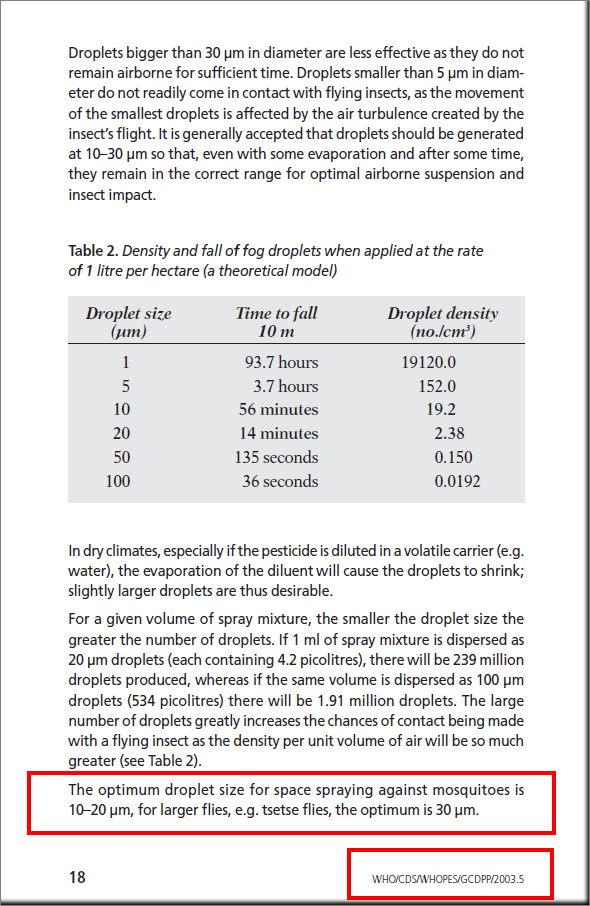
How should biocidal control be conducted?
Wind direction, wind speed, air temperature, high pressure, low pressure, and other atmospheric conditions directly affect spraying activities. In this context, detailed spraying criteria can be found in the World Health Organization (WHO) guide titled “A practitioner’s guide.” Additionally, consulting expert specialists in the field will ensure successful biocidal control.
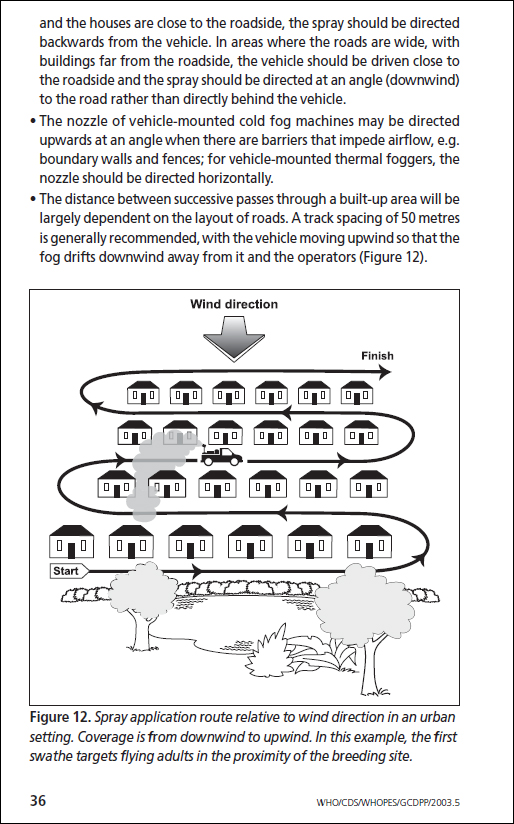
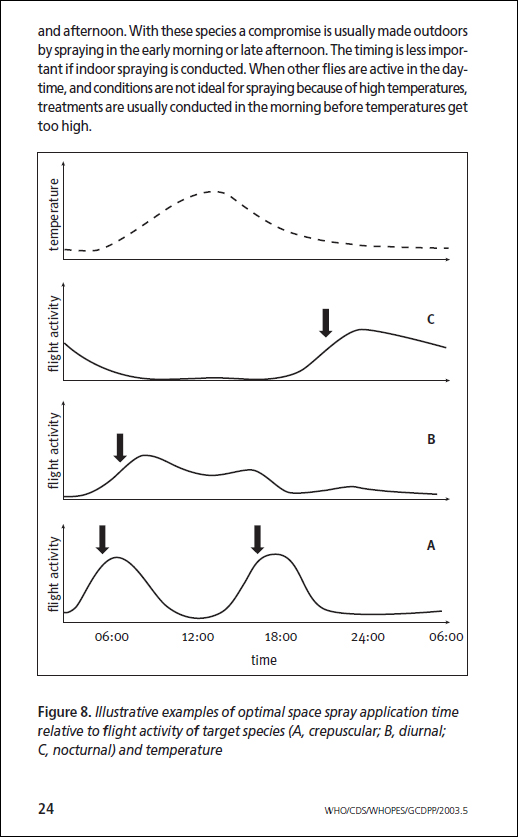
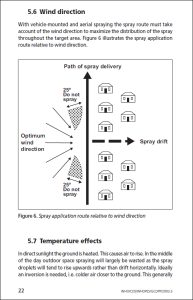

What is the criterion for cold fogging?
The cold fogging method is defined by the World Health Organization with a droplet size range of 0-30 microns (µm). In this method, the chemical substance in liquid form is sprayed as droplets sized 0-30 microns (µm). It is called “cold” because the process involves spraying as fog without using heat, by exposing the liquid to high air flow through a vortical type nozzle.
What is the ULV criterion?
The U.L.V. (Ultra Low Volume) method is defined by the World Health Organization with a droplet size range of 30-50 microns (µm). In this method, the chemical substance in liquid form is sprayed as droplets sized 30-50 microns (µm). The liquid is sprayed at low volume without using heat, by exposing it to high air flow through a vortical type nozzle. The term Ultra Low Volume has been adopted in the literature as “low volume spraying.”
What is the Mist Blower criterion?
The Mist Blower method is defined by the World Health Organization with a droplet size range of 50-100 microns (µm). In this method, the chemical substance in liquid form is sprayed as droplets sized 50-100 microns (µm). The liquid is sprayed at high volume without using heat. The term Mist Blower has been adopted in the literature as “high volume spraying.”
What is the Garden Sprayer criterion?
The Garden Sprayer method is defined by the World Health Organization with a droplet size range of 100-300 microns (µm). In this method, the chemical substance in liquid form is sprayed as droplets sized 100-300 microns (µm). The liquid is sprayed at high volume without using heat. The term Garden Sprayer has been adopted in the literature as “handgun spraying.”
What is the Thermal Fogging criterion?
The Thermal Fogging method is defined by the World Health Organization with a droplet size range of 1-100 microns (µm). In this method, the chemical substance in liquid form is sprayed as droplets sized 1-100 microns (µm). The liquid chemical is vaporized at a high temperature (400°C) and then sprayed as a dense fog (aerosol) cloud when it comes into contact with cold air. The sprayed particles are not transparent like in water-based spraying but appear as dense white smoke. The thermal fogging method does not burn the chemical or reduce its effectiveness. On the contrary, it provides an application that is 12 times more effective and efficient compared to water-based spraying. But because it obstructs visibility in traffic, its use on highways requires permission from local authorities. However, it is not subject to permission in private properties, rural areas, and residential neighborhoods. The term Thermal Fogging is known in the literature as “oil-based spraying.”
Technical Information
Additional information
| Engine | 18 Hp Briggs & Stratton, 570cc, gasoline, 2 cylinders, 4 stroke, air cooled, electric started |
|---|---|
| Pump | Roots type air blower, 2 lobes, positive displacement rotary type, 400 cfm, 3600 rpm |
| Connection Type | Direct drive with carbon fibre reinforced coupling rubber |
| Nozzle | 4 nozzles, 360° |
| Spray Droplet Sizes | 15, 30, and 55 µm sizes in test report. Adjustable from 15 to 55 µm in different sizes |
| ULV Tank | 50 L, stainless steel, consumption 0~60 L/h (Adjustable) |
| Thermal Tank | 50 L, stainless steel, consumption 0~8.5 L/h (Adjustable) |
| Cleaning Tank | 5 L, stainless steel |
| Fuel Tank | 22 L, stainless steel, approx. consumption 2.5 L/h |
| Remote Control | 6 m cable, remote control on/off, engine start/stop, ulv, thermal, flush on/off |
| Air Velocity At Nozzle | 172 m/s |
| Noise Level | 93.5 dB(A) |
| Battery Type | 12 V, 60 Ah |
| Weight | Empty 200 Kg, Full 327 Kg, Shipping weight 340 Kg |
| Dimensions | 100x120x110 cm, Shipping dimensions 110x140x90 cm (W,L,H) |
| Extra Options | 2 nozzles, Rotating automatic nozzle with remote control operation. |
| Origin | Made in Turkey |
| Warranty | 2 years |
| MOQ | 1 unit |



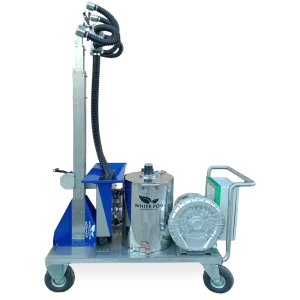
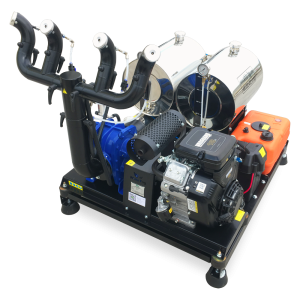
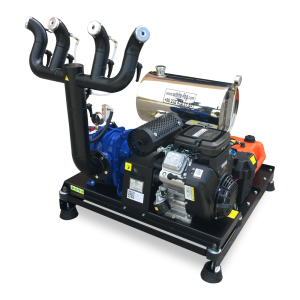
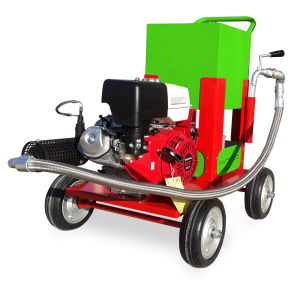
Reviews
There are no reviews yet.